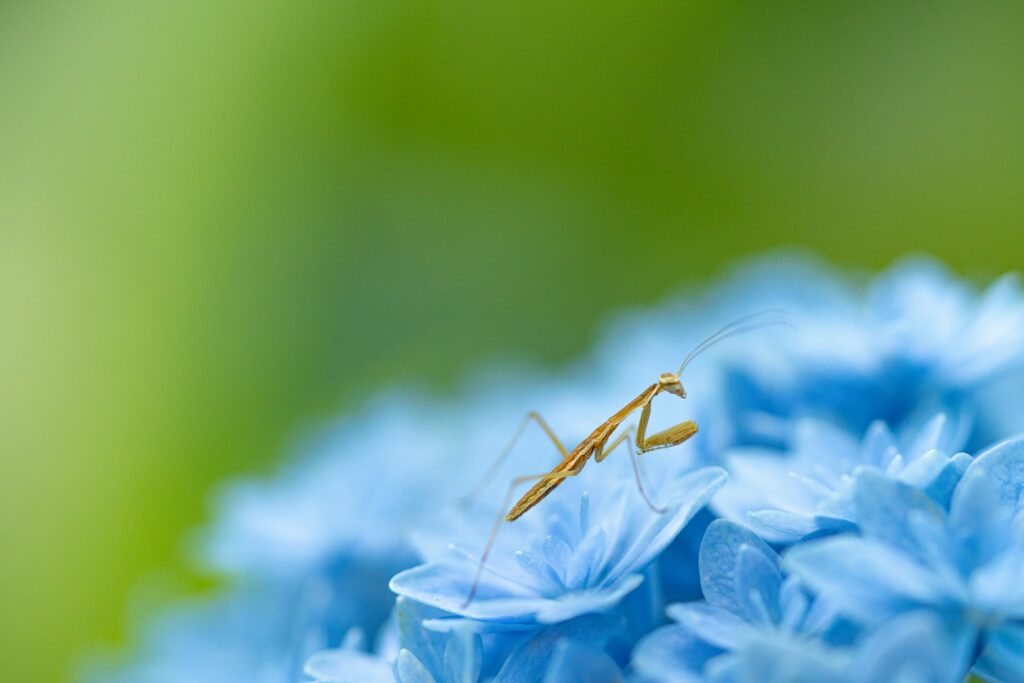In the shadowy underbrush and sun-dappled canopies of our world, a fascinating predator performs one of nature’s most captivating yet lethal performances. The praying mantis, with its distinctive posture and alien-like features, is not merely waiting in ambush – it’s actively engaging in a sophisticated hunting strategy that blends patience, precision, and deception. These remarkable insects have evolved a complex repertoire of techniques to lure, capture, and consume prey, earning them a fearsome reputation in the insect world. From their hypnotic movements to their lightning-fast strikes, the hunting methods of these carnivorous insects represent one of evolution’s most refined predatory systems, a deadly dance millions of years in the making.
The Enigmatic Hunter: Understanding Mantis Biology
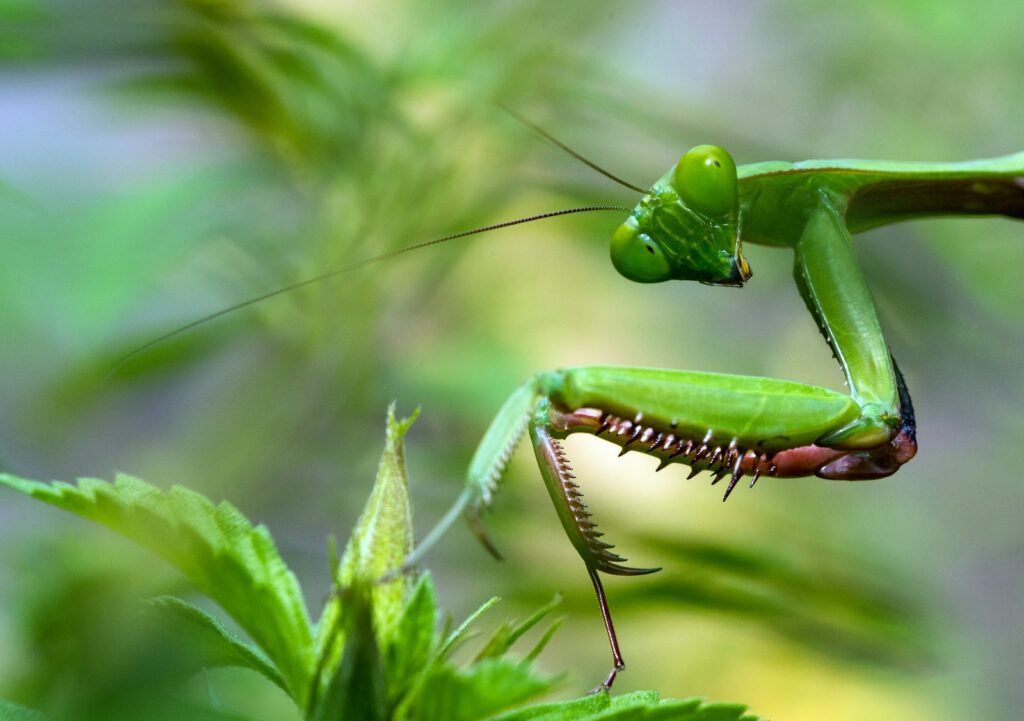
Praying mantises belong to the order Mantodea, comprising over 2,400 species distributed across temperate and tropical regions worldwide. Their name derives from their distinctive front legs, which are folded in a position reminiscent of prayer, yet these appendages are actually specialized killing tools. Most mantises range from 2 to 5 inches in length, though some tropical species can reach an impressive 6-7 inches. Their most distinguishing feature is perhaps their triangular head equipped with bulging compound eyes that provide exceptional vision, allowing them to detect the slightest movements up to 60 feet away. This remarkable visual acuity is further enhanced by their ability to rotate their heads nearly 180 degrees, giving them a comprehensive view of their surroundings while maintaining their ambush position.
Masters of Disguise: Camouflage as a Hunting Strategy

At the core of the mantis hunting strategy lies an extraordinary ability to blend into their surroundings, making them nearly invisible to both predators and prey. Different species have evolved coloration and body structures that mimic specific elements of their preferred habitats – from the orchid mantis’s pink flower-like appearance to the dead leaf mantis that resembles a withered leaf in both texture and color. Some species, like the ghost mantis, have evolved leaf-like extensions on their bodies that break up their outline, making them virtually indistinguishable from vegetation. This exceptional camouflage allows mantises to remain motionless for hours or even days, waiting for unsuspecting prey to wander within striking distance. Their cryptic appearance isn’t just passive protection – it’s the first step in their elaborate predatory sequence, transforming them from conspicuous hunters into living traps.
The Hypnotic Sway: Motion-Based Luring Techniques
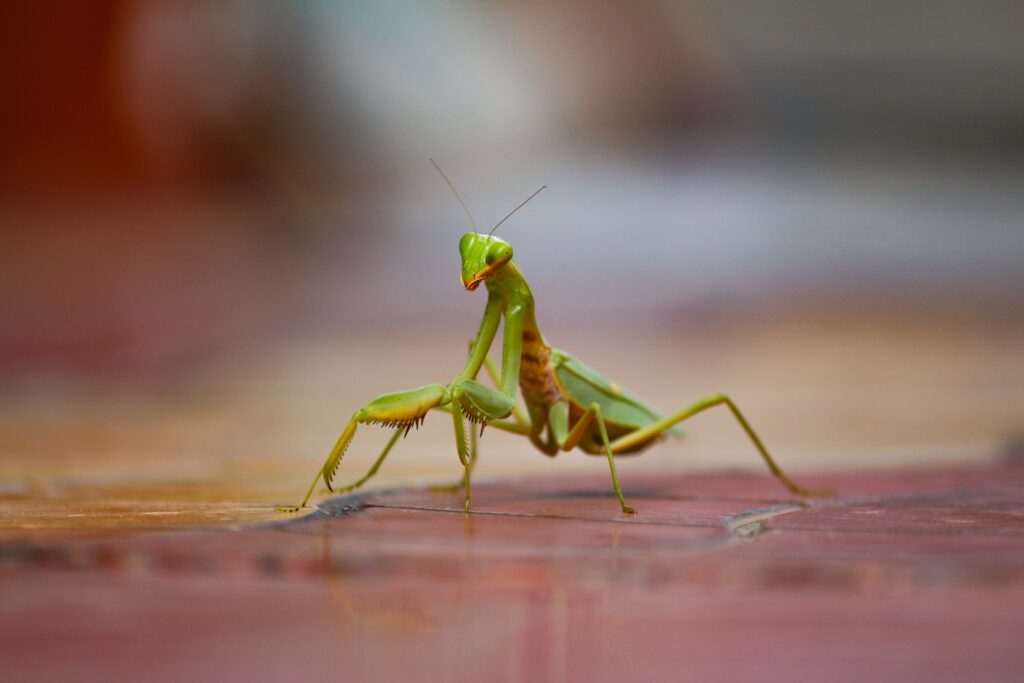
Among the most fascinating behaviors in the mantis hunting repertoire is their ability to mimic the movement of vegetation in the wind. Many mantis species will gently rock back and forth in a rhythmic swaying motion that perfectly mimics leaves or twigs moving in a light breeze. This swaying serves multiple purposes in their hunting strategy – it enhances their camouflage by matching the natural movement in their environment and can actually mesmerize or confuse potential prey. Research has shown that this rocking motion can make mantises harder for prey to identify as a threat, as many prey species are evolved to detect the distinct movement patterns of predators. Some mantis species have refined this technique to create a hypnotic effect, with the swaying potentially disorienting prey or drawing curious insects closer to investigate the unusual movement.
Visual Deception: How Mantises Use Color and Shape
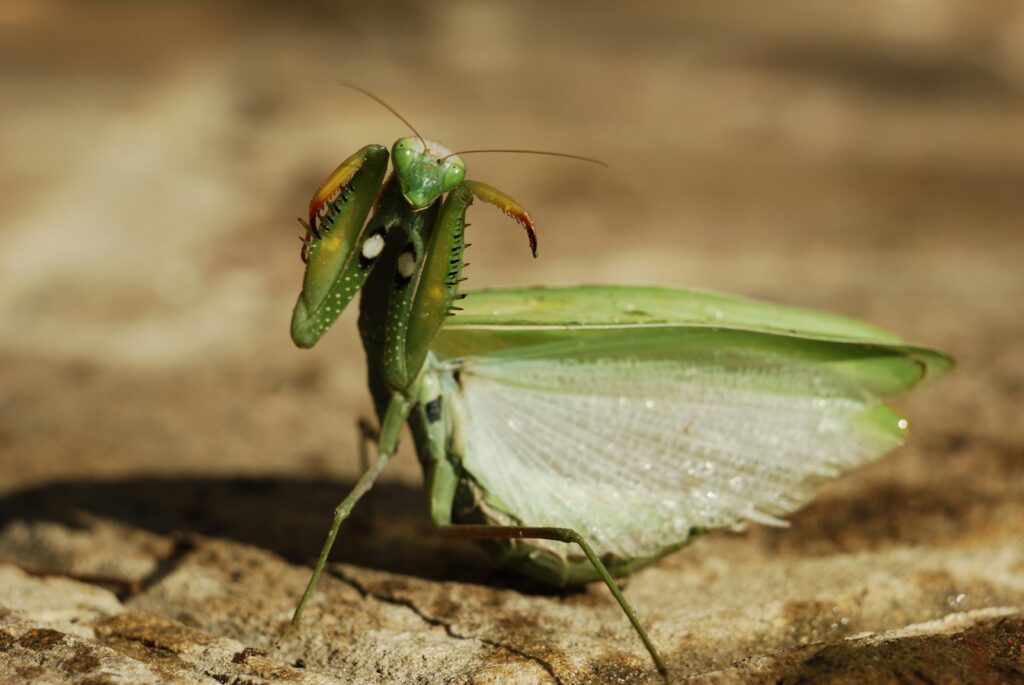
Beyond passive camouflage, some mantis species employ active visual deception to attract specific prey types. The orchid mantis (Hymenopus coronatus) represents perhaps the most spectacular example of this strategy, with its body evolved to resemble a pink and white flower, complete with petal-like legs. Studies have confirmed that these mantises are not simply camouflaged but are actually more attractive to pollinating insects than real flowers in their habitat. The Malaysian dead leaf mantis displays brown, mottled coloration with irregular edges that perfectly mimic a decomposing leaf, attracting insects that feed on decaying vegetation. Some mantis species have evolved bright coloration on their inner forelegs that they can suddenly flash to startle prey, creating a moment of confusion that gives the mantis the split-second advantage it needs to strike. These sophisticated visual lures demonstrate how mantises have evolved beyond simple camouflage into active mimicry specifically tailored to exploit the behavior of their preferred prey.
Chemical Attraction: The Scented Lure

Research has revealed that some mantis species employ chemical tactics in their hunting strategy, though this remains one of the less understood aspects of mantis behavior. Studies suggest that certain species may release chemical compounds that mimic insect pheromones, particularly those that attract flying pollinators like moths and butterflies. The devil’s flower mantis (Idolomantis diabolica), with its ornate flower-like appearance, may supplement its visual deception with scents that mimic flowering plants. Female mantises are known to release pheromones to attract males for mating, and some researchers theorize this chemical signaling ability may have been adapted for hunting purposes in certain species. Though still an emerging area of study, this chemical dimension adds another layer to the sophisticated predatory tactics employed by these remarkable insects, potentially allowing them to attract prey even beyond visual range.
The Perfect Ambush: Positioning and Patience
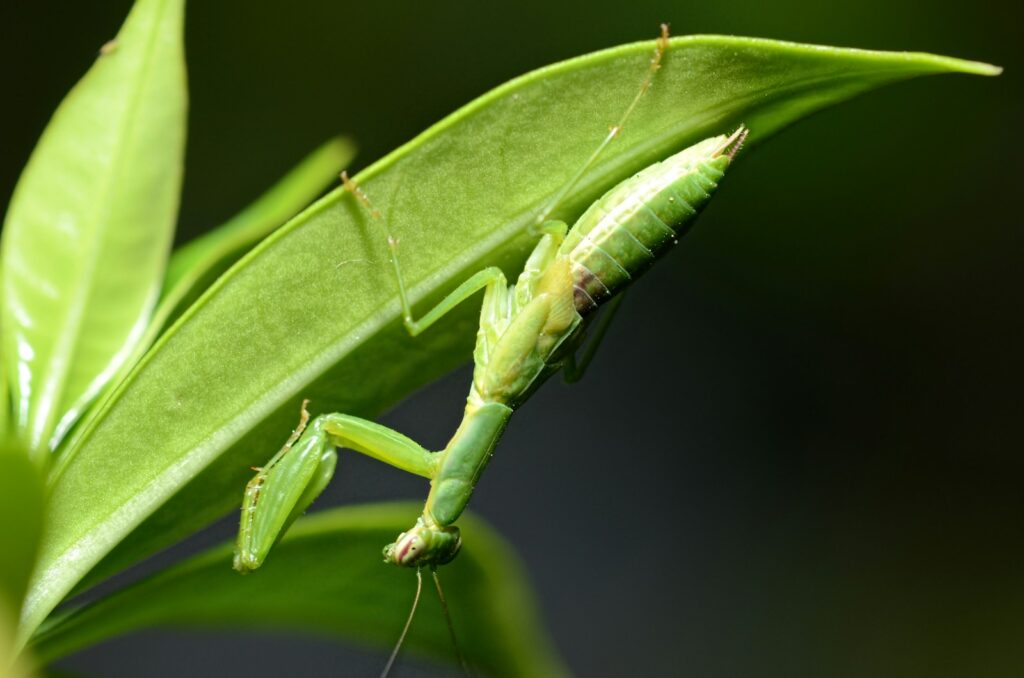
The position a mantis selects for its ambush is far from random and represents a critical element in their hunting strategy. Mantises carefully select perches that maximize their access to prey while minimizing their visibility, often choosing locations where insects naturally travel or gather. Many species position themselves on flowering plants where pollinators regularly visit, while others may select positions along established insect flight paths. The patience displayed by mantises during their hunt is nothing short of extraordinary, with individuals remaining motionless for hours or even days while waiting for suitable prey to approach. Their metabolic rate slows during these waiting periods, conserving energy while maintaining complete readiness to strike. When potential prey is detected, the mantis will often make minute adjustments to its position, orienting its body toward the approaching victim while maintaining its camouflage, a perfect example of the calculated precision that characterizes these ambush predators.
The Lightning Strike: Anatomy of a Mantis Attack
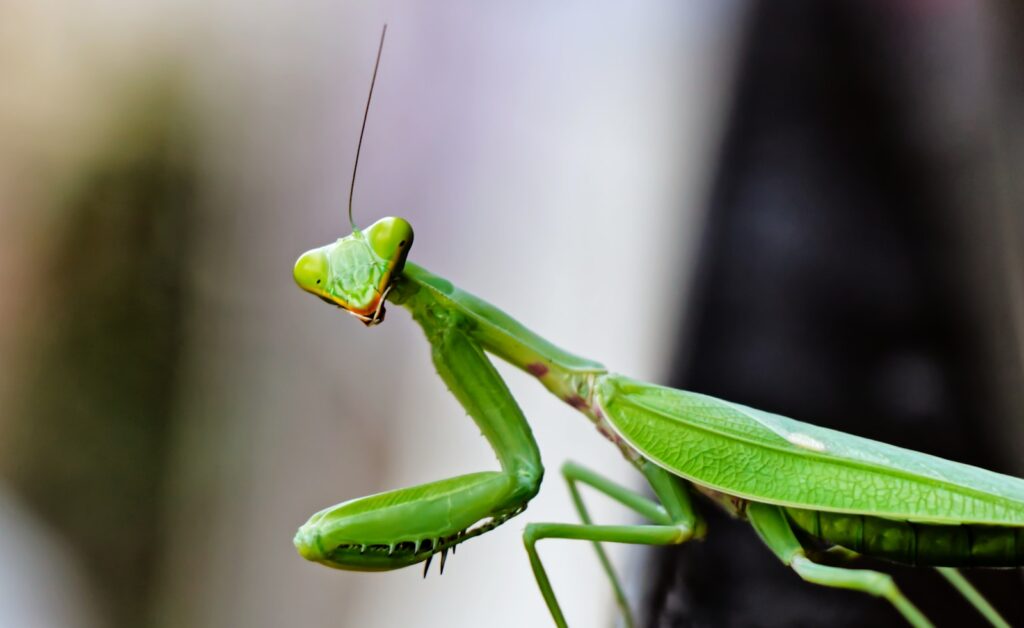
When prey ventures within striking distance, the mantis executes one of the animal kingdom’s fastest and most precise attacks. Their specialized front legs, equipped with rows of sharp spines, launch forward at an astonishing speed – the strike typically takes just 50-70 milliseconds, faster than the human eye can perceive. High-speed photography has revealed that during this strike, mantis forelegs can accelerate at up to 9 G of force, achieving speeds that would render most prey unable to escape even if they detect the movement. The precision of this strike is equally impressive, with mantises able to calculate the exact distance, direction, and timing needed to intercept moving prey. Once captured, the powerful spines on their forelegs lock around the prey like a medieval torture device, making escape virtually impossible. This deadly combination of speed, force, and precision makes the mantis strike one of nature’s most effective predatory mechanisms, refined through millions of years of evolution.
The Flower Mimics: Specialized Predatory Adaptations

Among the most remarkable specialists in the mantis world are the flower mantises, which have evolved extraordinary adaptations specifically for luring pollinators. The Malaysian orchid mantis (Hymenopus coronatus) represents perhaps the pinnacle of this evolutionary strategy, with its body evolved to not just resemble a flower but to actually appear more attractive to insects than real flowers. Studies have confirmed that these mantises attract flying insects at a higher rate than actual flowers in their habitat, acting as super-stimuli to pollinators. Their legs feature flattened, petal-like extensions with colors that precisely match local orchid species, while their bodies display the exact shade of pink that pollinators in their ecosystem find most attractive. Other flower mantis species, like the devil’s flower mantis, display elaborate petal-like structures that can be expanded or contracted depending on hunting conditions. These specialized adaptations demonstrate the extraordinary evolutionary paths that mantises have taken to perfect their predatory strategies.
Beyond Insects: The Surprising Range of Mantis Prey
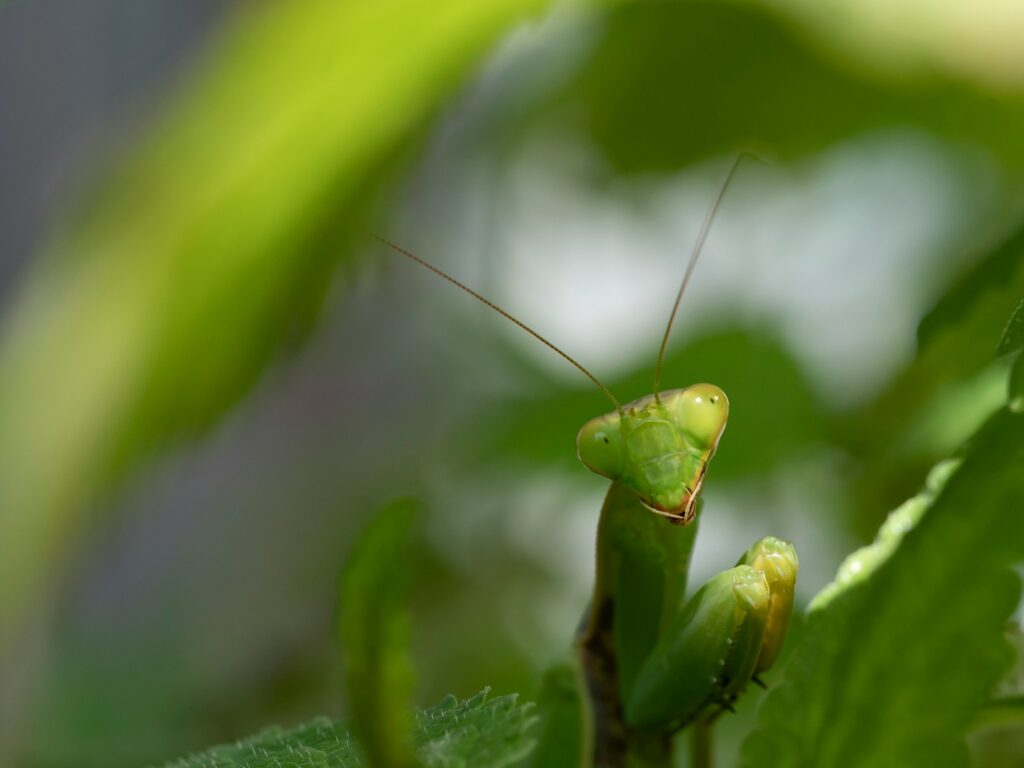
While most mantises primarily target insects, their predatory ambitions often extend far beyond the invertebrate world. Larger mantis species have been documented capturing and consuming small vertebrates including hummingbirds, small lizards, frogs, and even mice. The Chinese mantis (Tenodera sinensis), which can reach lengths of nearly 5 inches, has been observed capturing small birds at hummingbird feeders, using its powerful forelegs to grasp the bird while delivering fatal bites. These larger prey items provide mantises with significant nutritional rewards that can sustain them for extended periods. The ability to capture vertebrate prey also illustrates the remarkable strength and effectiveness of the mantis hunting apparatus. Some mantis species have even developed specific techniques for targeting larger prey, including positioning themselves near nectar sources or fruit where vertebrates might feed, demonstrating the behavioral flexibility that makes mantises such successful predators across a range of ecosystems.
The Deadly Attraction: Mantis Mating and Cannibalism

Perhaps the most infamous aspect of mantis behavior is sexual cannibalism, where females sometimes consume their mates during or after copulation. This behavior is actually less common in wild populations than once believed, occurring in roughly 30% of mantis mating encounters. However, this phenomenon reveals how the mantis’s predatory instincts are deeply integrated into every aspect of their biology, including reproduction. Males approach females with extreme caution, often employing specific movements that may help identify them as potential mates rather than prey. Some male mantises have evolved specific strategies to avoid being eaten, including approaching females while they are already feeding on other prey. Interestingly, research suggests that males who are consumed often transfer more sperm than those who survive mating, potentially providing an evolutionary advantage to this seemingly macabre behavior. The predatory nature of female mantises creates one of nature’s most dangerous courtship rituals, where the line between reproduction and predation becomes blurred.
Evolutionary Arms Race: How Prey Adapt to Mantis Predation

The deadly efficiency of mantis hunting tactics has triggered evolutionary responses in their prey, creating a fascinating biological arms race. Many flying insects have developed specialized evasive flight patterns that make them more difficult for mantises to track and capture. Moths, common mantis prey, have evolved ultrasonic hearing that allows them to detect approaching bats, but research suggests these same adaptations may help them detect the subtle movements of striking mantises. Some butterfly species have evolved wing patterns that mimic the appearance of predatory animals’ eyes, potentially deterring mantis attacks. Certain insects have even developed chemical defenses that make them unpalatable or toxic to mantises, often coupled with bright warning coloration. This ongoing evolutionary struggle has likely contributed to the mantis’s increasingly sophisticated hunting methods, as each advancement in prey defense necessitates corresponding improvements in predatory tactics, driving both predator and prey toward greater specialization and complexity.
The Neurological Marvels: How Mantis Brains Process Hunting

Neurological studies have revealed that the mantis brain, though tiny compared to vertebrate brains, contains sophisticated neural circuits dedicated specifically to predatory behavior. Their visual processing system is particularly remarkable, with specialized neurons that respond specifically to prey-like movements while filtering out background motion, allowing mantises to detect potential meals against complex, moving backgrounds. High-speed coordination between their visual system and motor neurons enables the precisely timed strikes that characterize mantis hunting. Research using specialized mantis-sized 3D glasses has even demonstrated that these insects possess stereo vision similar to humans, allowing them to accurately judge the distance to their prey – a rare capability in the insect world. Their brain also contains neural circuits dedicated to maintaining their characteristic “prayer” pose while remaining ready to strike, a constant state of controlled tension that requires significant neural resources. These neurological adaptations highlight how natural selection has shaped the mantis nervous system into a specialized predatory system, optimized for their unique hunting strategy.
Conservation and Coexistence: The Role of Mantises in Ecosystems
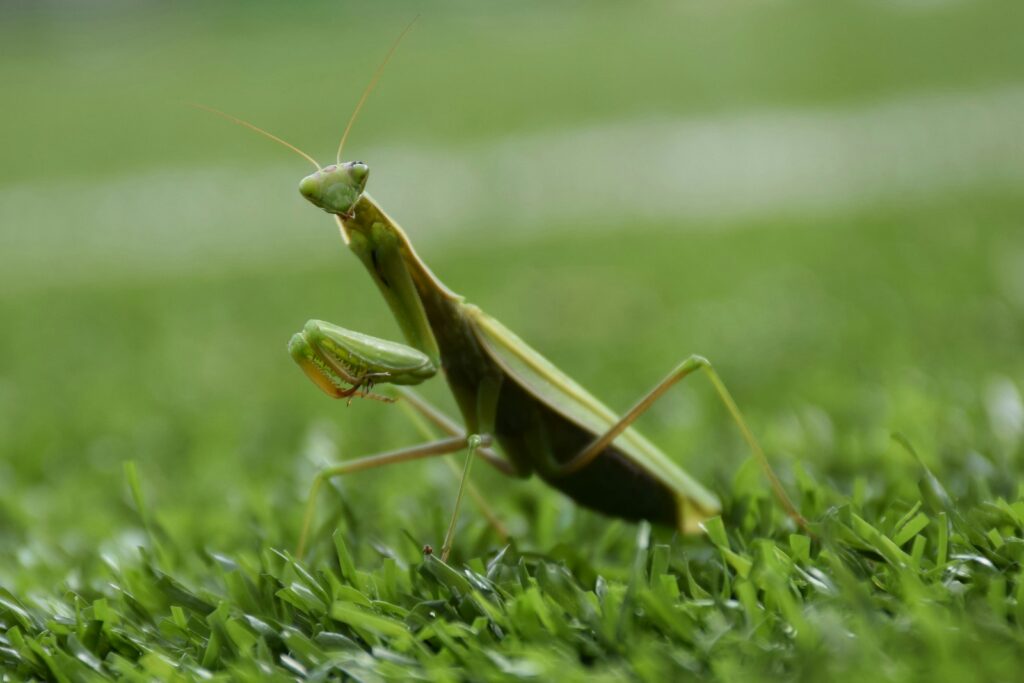
Despite their fearsome reputation, mantises play vital roles in their ecosystems as mid-level predators that help control insect populations. In agricultural settings, mantises are considered beneficial insects that prey on numerous crop pests, though their indiscriminate hunting means they consume beneficial insects as well. Many species face threats from habitat loss, pesticide use, and collection for the exotic pet trade, with several mantis species now considered threatened or endangered in their native ranges. Climate change poses additional challenges, potentially disrupting the synchronization between mantis life cycles and prey availability. Conservation efforts for mantises include habitat protection, reduced pesticide use, and breeding programs for endangered species. As formidable predators that have survived virtually unchanged for over 150 million years, mantises represent an evolutionary success story worth protecting, continuing their deadly dance in ecosystems worldwide for generations to come.
Conclusion

The praying mantis stands as a testament to the sophistication that can evolve in even the smallest predators. Their extraordinary blend of patience, deception, and precision makes them among nature’s most accomplished hunters. From the specialized flower mimics that outshine real blossoms to the lightning-fast strikers that can capture birds in mid-flight, mantises demonstrate the remarkable diversity that can emerge from a single evolutionary blueprint. As we continue to study these fascinating insects, we uncover ever more complex layers to their predatory behaviors – chemical attractants, hypnotic movements, and neurological specializations that rival the sophistication of much larger animals. In the deadly dance of the praying mantis, we witness not just the spectacle of predation but a living example of evolution’s extraordinary capacity to craft specialized predators that have survived virtually unchanged since the time of dinosaurs.

